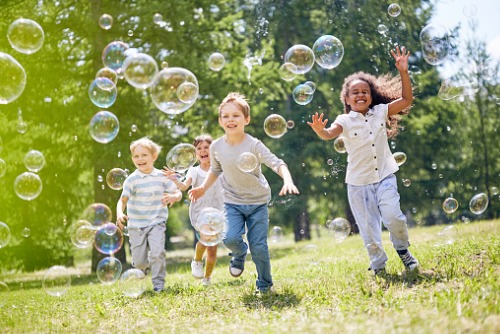
Contrary to the belief that Australians are a nature-loving outdoor nation, research suggests we’re spending less and less time outdoors – and schoolchildren are no exception.
In an article published in The Conversation, Professor Tonia Gray from the Centre for Educational Research at Western Sydney University (WSU) said this worrying trend is also becoming increasingly apparent in our educational settings.
“In the last few decades, society has become estranged from the natural world, primarily due to urban densification and our love affair with technological devices, usually located in indoor built environments,” Professor Gray said.
“Contact with nature can enhance creativity, bolster mood, lower stress, improve mental acuity, well-being and productivity, cultivate social connectedness, and promote physical activity. It also has myriad educational benefits for teaching and learning.”
Professor Gray said that outdoor play is not only central to children’s enjoyment of childhood, it teaches critical life skills and enhances growth and development.
“Contemporary research shows outdoor play-based learning can also help improve educational outcomes. A recent study found being outside stimulated learning and improved concentration and test scores,” she said.
Nature contact also plays a crucial role in brain development, Professor Gray notes. One recent study found that cognitive development was promoted in association with outdoor green space, particularly with greenness at schools.
“Autonomy and freedom in the outdoors is both liberating and empowering for kids. Burning off excess energy outdoors makes children calmer and fosters pro-social behaviours,” she said.
“Teaching and learning in natural environments encourages self-mastery through risk taking, physical fitness, resilience, self-regulation, and student-centred discovery. Imagination is also enhanced by free, unstructured play.”
Professor Gray said countries such as Denmark, Sweden, Finland and Norway spend up to half the school day outdoors (rain, hail or shine) exploring the real-world application of their classroom learning.
What schools and parents can do
Professor Gray said children learn better when they can experience learning, rather than hearing it read from a textbook.
She pointed to a study in Chicago which used brain scans to show students who took a hands-on approach to learning had experienced an activation in their sensory and motor-related parts of the brain. Later, their recall of concepts and information was shown to have greater clarity and accuracy.
“Practical lessons outside will stick better in young brains than learning theory from a book. This may be why in 2017, ACARA included outdoor learning in the national curriculum,” Professor Gray said.
“Options for teachers include taking the class outside to write poetry about nature, measuring the height of trees for maths classes, or de-stressing using mindfulness and breathing techniques while sitting quietly in the shade of a tree.”
Professor Gray said conversations with parents and teachers show they’re increasingly concerned about technology’s broader impact on their children, “in both dramatic and subtle ways”.
“In many ways our hunger for technology has overridden our desire for direct human interaction. Screens compete directly with authentic channels of communication such as face-to-face interaction,” she said.
To combat this, Professor Gray said parents can assign one hour on and one hour off screens.
“Parents are role models and so we also need to monitor our own time on screens and spend quality time with children detached from our digital devices,” she said.
“The sad reality is technology can become a pseudo-parenting device, a form of pacifier to keep the kids busy. Instead, we can encourage our kids to engage in simple, unstructured play experiences.”
Professor Gray said these could include creating an outdoor scavenger hunt where they collect items from nature, building forts or dens incorporating inexpensive materials such as branches and old sheets or blankets, climbing trees, or laying on the grass and looking upwards into the sky to watch the cloud formations.
“Other methods include making mud pies or sandcastles at the beach or in a sandbox; encouraging the collection of feathers, petals, leaves, stones, driftwood, twigs or sticks to make creative artworks on large sheets of paper; planting a garden with vegetable seedlings or flowers with your child (let them decide what will be planted); putting on a jacket and gumboots when it rains and jump in puddles together; or making an outdoor swing or billycart,” she said.
“Nature offers a never-ending playground of possibilities with all the resources and facilities needed.”
If stuck, Professor Gray suggested searching on the web for wild play or nature play groups nearby as they are growing in popularity and number.
“But most importantly, reinforce the message that getting wet, having dirt stains on their clothes and getting their hair messy is good and adds to the fun,” she said.


